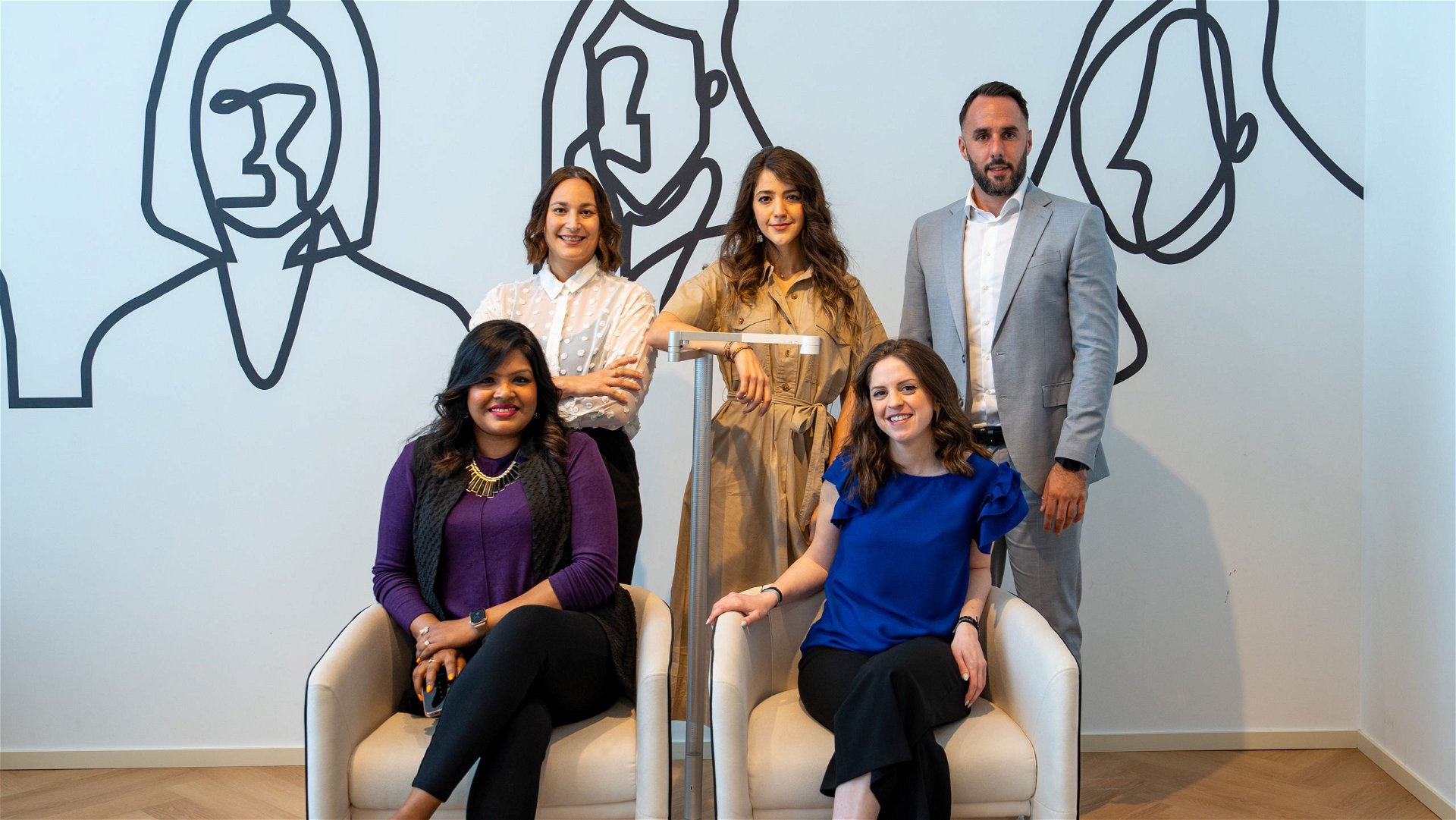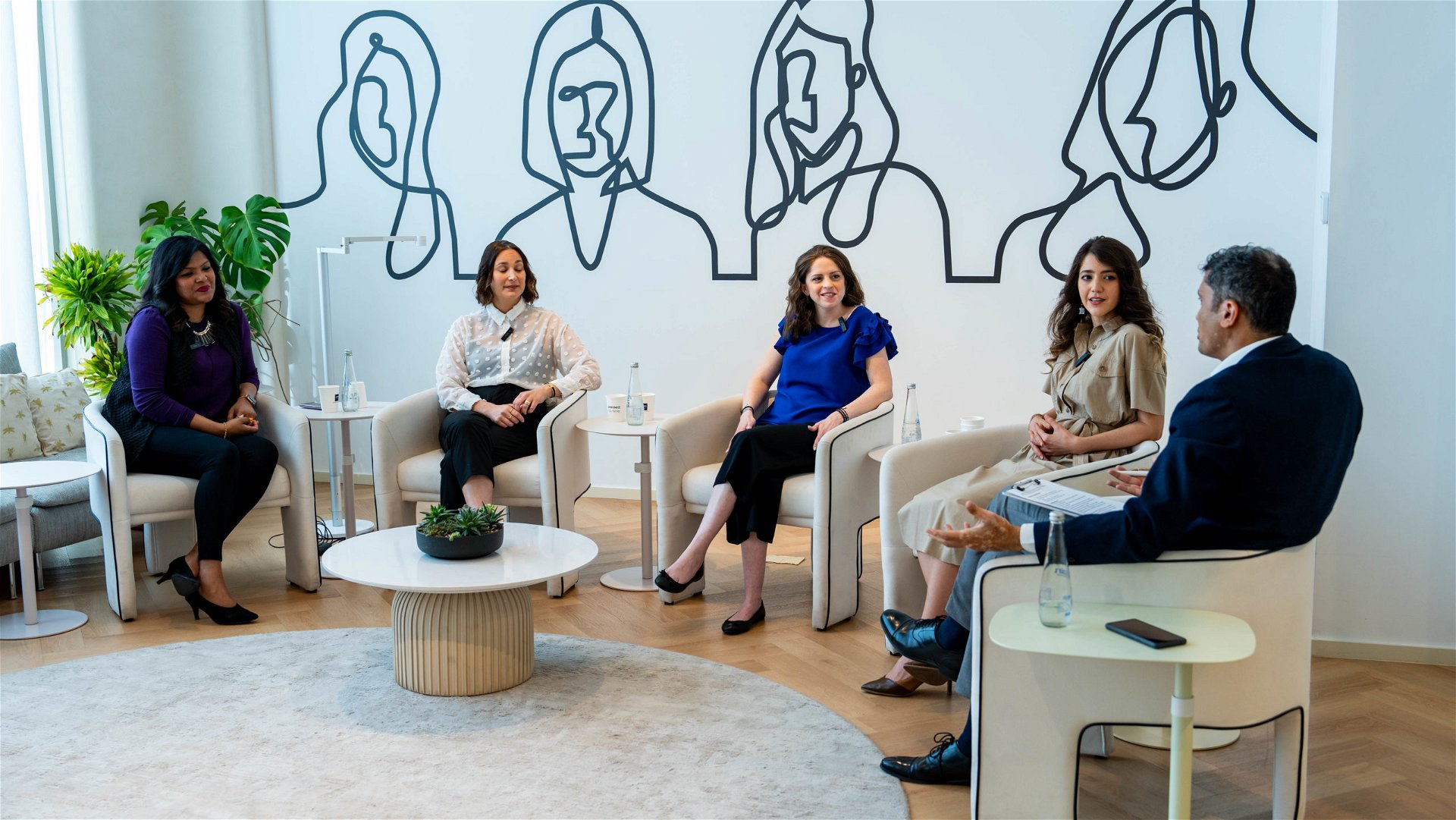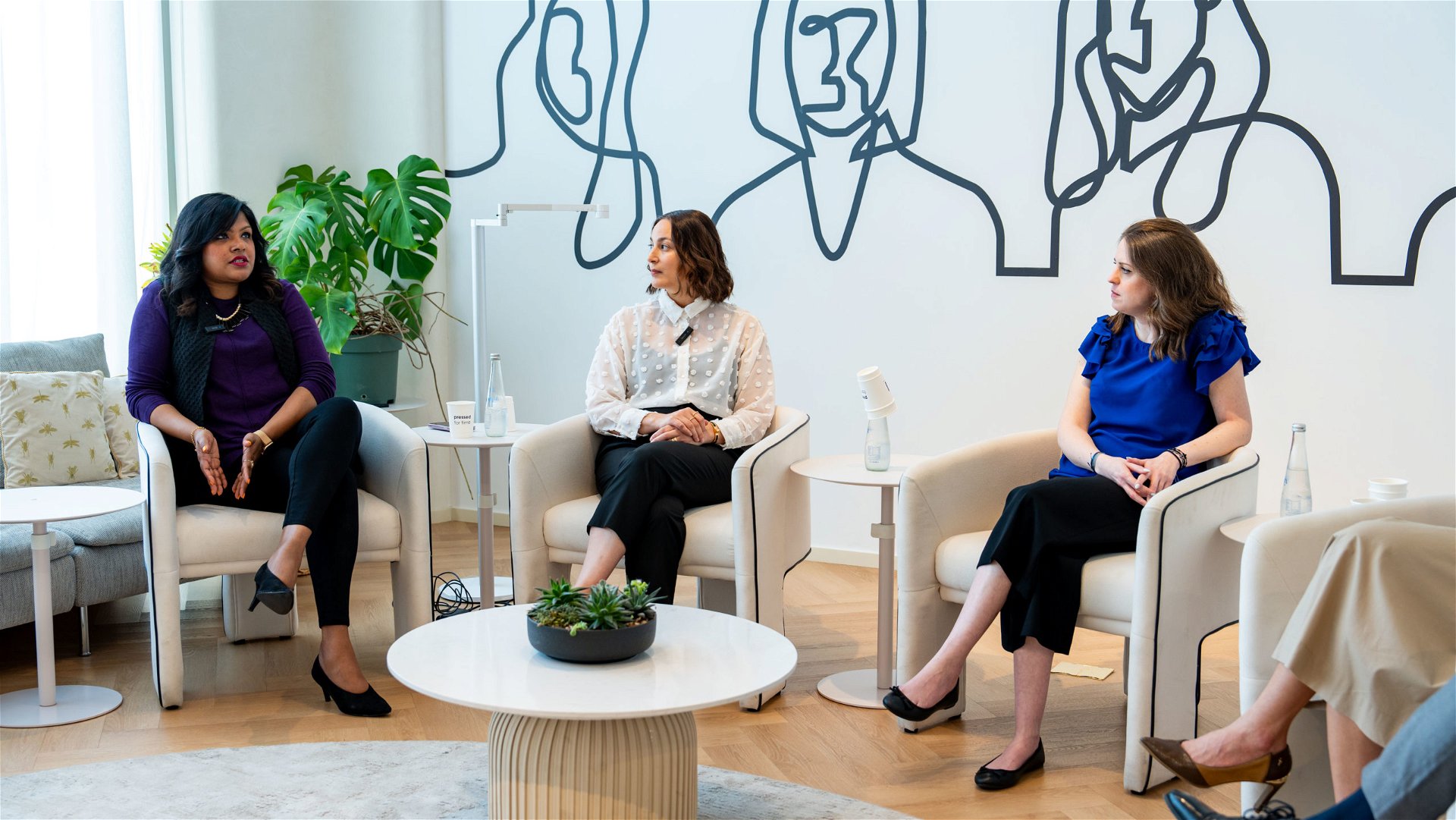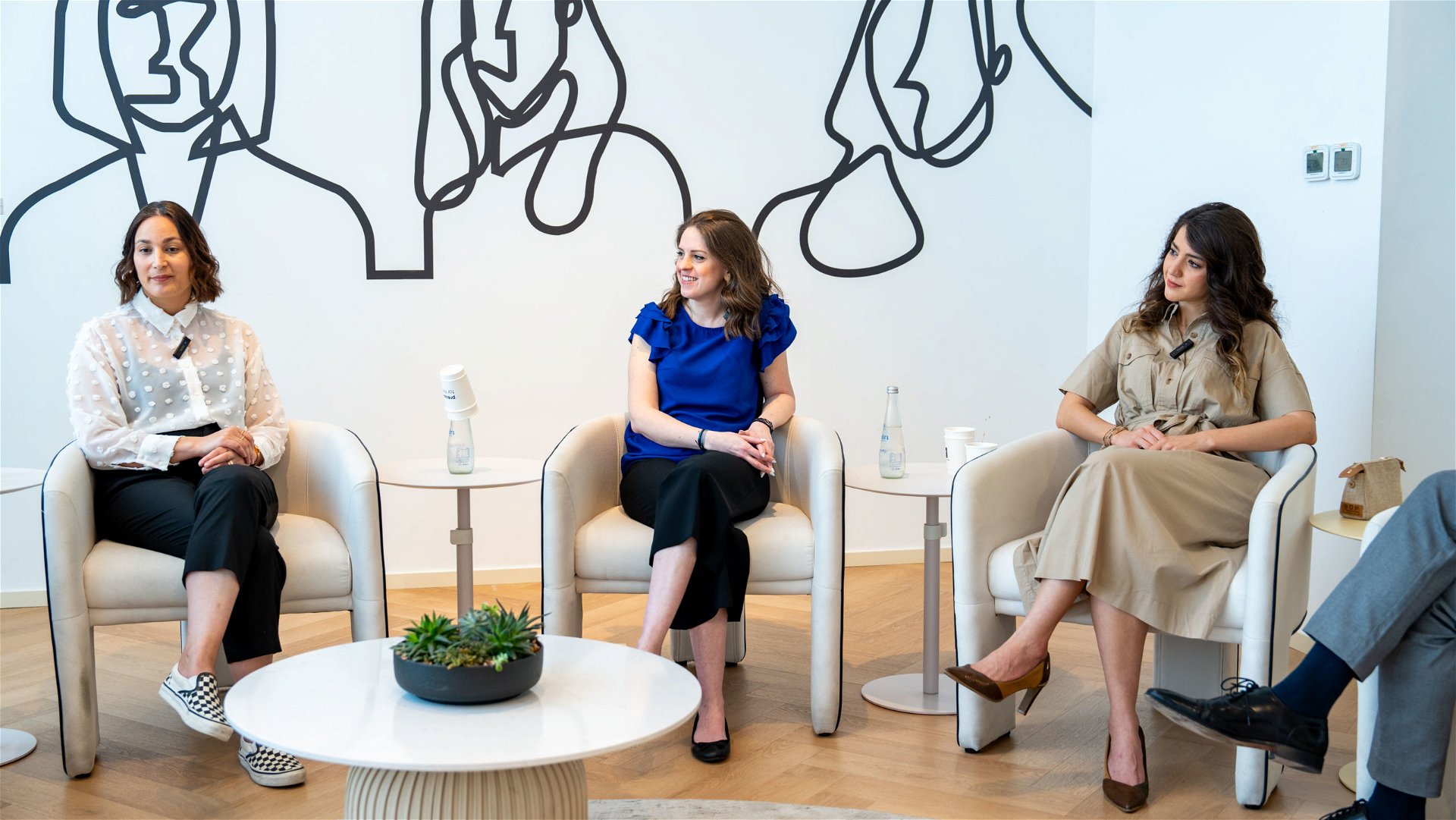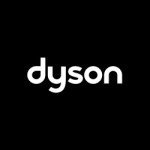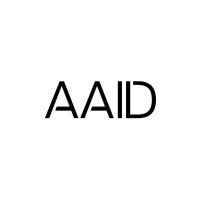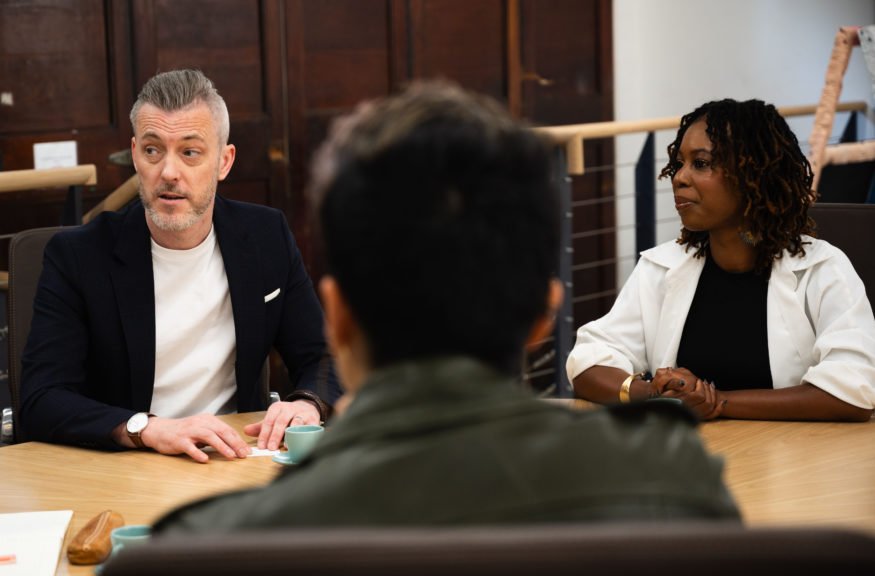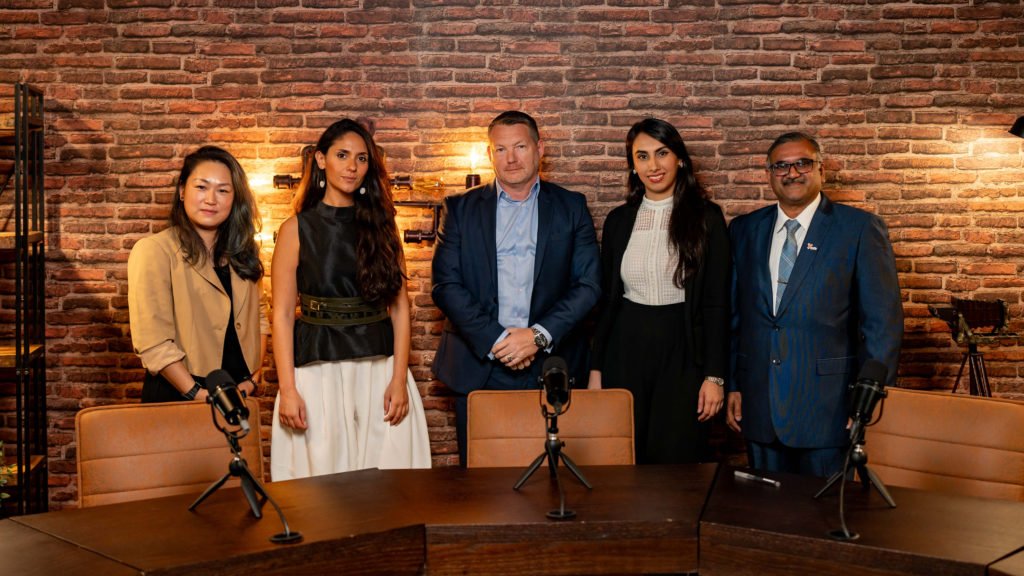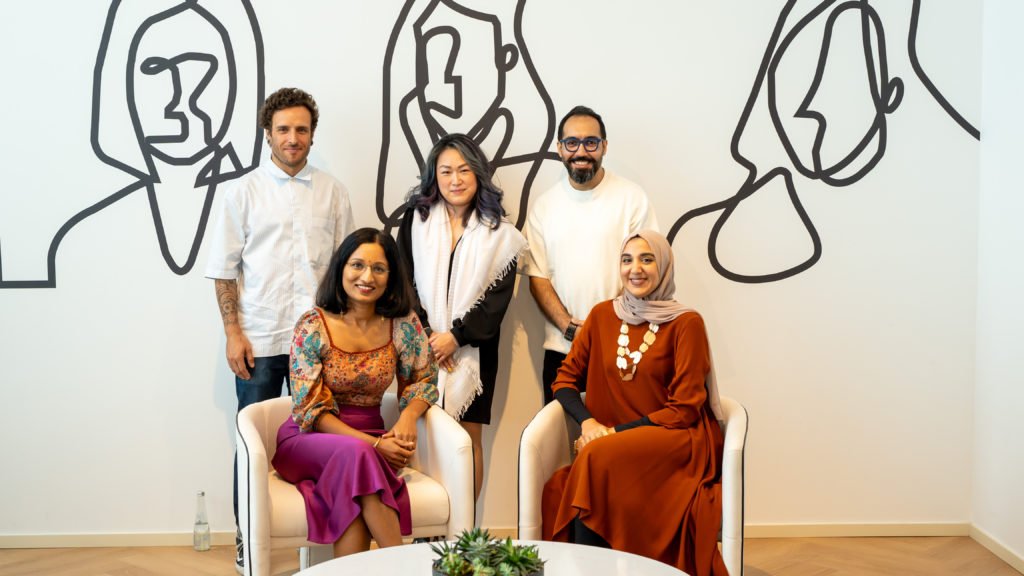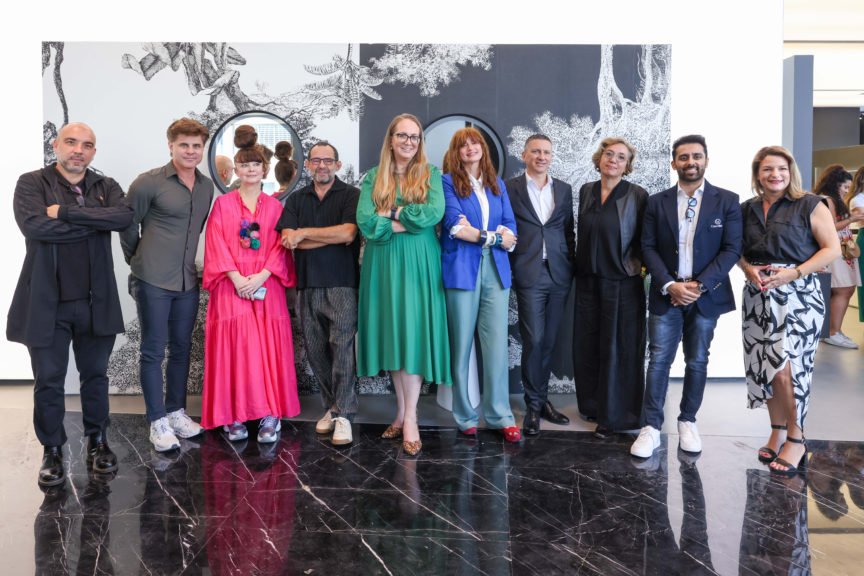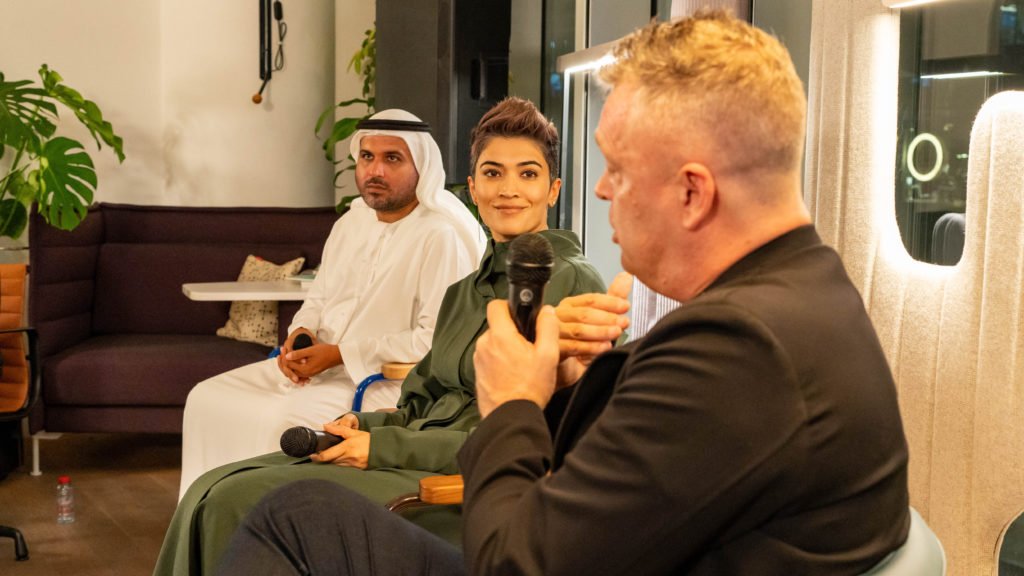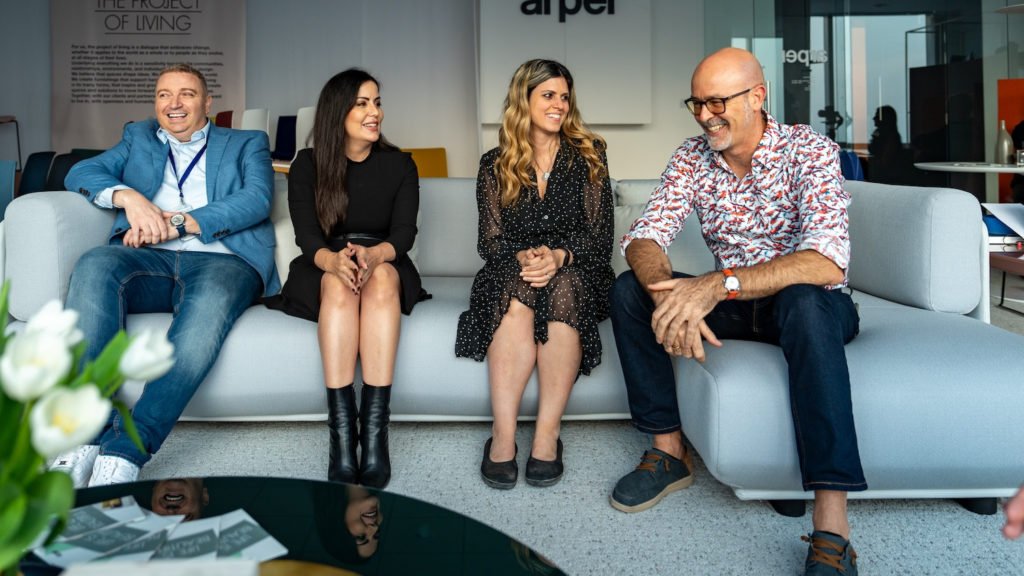On 24th October 2023, Dyson invited designers from AAID, Spacewell Interiors, Summertown and Waru to The Bureau. The agenda was to discuss Design & Workplace Productivity, and exchange notes on raising the bar of design quality. As the roundtable talk progressed, some opinions were met with wide-eyes, while others with a complying nod. Let’s catch the rundown…
Theoretically, an ‘increase in productivity’ is a key factor in determining the success of a design. The notion that the physical workspace significantly influences employee output has gained widespread recognition. But realistically, how true is it?
“Culture is contagious”, Rasha Al-Tekreeti, Co-Founder at Waru, said with brevity. “A company’s culture is not what they write on their walls. It’s how an employee perceives and tries to mimic their leader’s behaviour.” Dyson had sponsored yet another round table following the success of the first one. For this iteration, four designers were discussing Design and Workplace Productivity.
From left to right: Savita Menon, Designer FF&E, QHSE Manager at Spacewell Interiors; Sandra Gillet, Interior Designer at Summertown Interiors; Jennifer Gabriel, Senior Project Designer at AAID; Rasha Al-Tekreeti, Co-Founder at Waru
A simple conclusion was drawn after briefly discussing what productivity meant to each panellist. A well-designed office cannot foster a thriving culture. Even the most thoughtful workspace can only amplify a company’s good values and productivity, but it cannot substitute a genuine focus on welfare by the employers.
Nonetheless, office layouts play a compelling role in retaining talent in an already successful model. And this was where the designers’ expertise lay. Rasha; Sandra Gillet, Interior Designer at Summertown Interiors; Savita Menon, Designer FF&E, QHSE Manager at Spacewell Interiors and Jennifer Gabriel, Senior Project Designer at AAID, deliberated on diverse topics. From sustainable materials, indoor air quality, lighting, and space design to integrating collaborative zones, here’s a quick catch-up…
The Burgeoning Focus on Collaborative Zones
The Newest ‘It’ Factor?
Spacewell Interiors’ newly renovated office is a sight to behold. It focuses on collaboration and leverages the power of vibrant colours. According to Savita, as much as the approach was needed in their organisation, it follows a ‘show, don’t tell philosophy.’
“Every time a client walks and compliments our office, and then points out that their ‘branding’ is blue, grey and black, it is easy to point out the difference colours can bring out”, she shares. Once a user has experienced the benefits first-hand, they are less likely to be rigid in their views. The Spacewell team can then work out a mid-way where the workstations could be grey, but the collaborative zones could flaunt colours. It makes the negotiations much easier.
But, one size does not fit all, and Rasha, who boasts extensive experience in corporate design, condones the same. “In a call centre, there is a lesser requirement for collaborative areas than in a design office. Two law firms might have the same departments, yet their spatial planning will look different depending on where their expertise lies and the ages of the employees”, she explains with an example.
To Rasha, understanding a business, its departments, the connections between the departments and the personalities of the employees is crucial in delivering a tailored design that enhances productivity.
“In a call centre, there is a lesser requirement for collaborative areas than in a design office. Two law firms might have the same departments, yet their spatial planning will look different depending on where their expertise lies and the ages of the employees“
– Rasha Al-Tekreeti, Co-Founder at Waru
Work from Office v/s Work from Home
Flexibility Wars & The Slow Rise of Focus Zones
“Client briefs still include creating designs that attract employees back into the office”, Jennifer confesses. While Sandra acknowledges that flexible working solutions are effective, she also sees why returning to the office could be tempting. “Sure, meetings can happen over Zoom calls, but it is not the same as conversing in person”, she says.
Working from home can mean not having definitive work hours and tasks spilling into one’s personal life. A dedicated office can help delineate the two. At the same time, a layout conceived in ‘corporate fabric’ is uninviting and dreaded. “Most employees spent a large portion of their day in the office. And spaces to carry on individual work peacefully are incumbent,” Sandra opines.
“Most employees spent a large portion of their day in the office. And spaces to carry on individual work peacefully are incumbent.“
– Sandra Gillet, Interior Designer at Summertown Interiors
Focus zones in an office are as important as (if not more) collaborative areas. They form the core of the work-life. Pods, silence zones and other such considerations can help employees view workspaces in a better light. Personalising desks could also alleviate the notion of a ‘corporate’ decorum. However, systems like hot-desking challenge that concept.
Rasha reveals that hot-desking has its own applications. “It is super useful in saving real estate. Using it for job roles that aren’t bound to desks is ultimately more sustainable. It can help the company downsize and optimise the space”, she avers. Ultimately, it is about understanding employee needs and designing with reference to them.
The Basics: Air Quality, Light & Temperature
Comfort – The Flag Bearer of Productivity
Different individuals have different levels of thermal comfort. Air-conditioning temperatures also deter a person’s comfort. In a city like Dubai, humidity is pivotal in determining outdoor and indoor air quality. With cases of HVAC systems growing mould in buildings, basics like ventilation ought to be considered.
“It is important to check the indoor air quality of a building before occupying it”, Rasha says. Inconspicuously, air quality can be detrimental to both physical and mental health. Spacewell’s team works with a maintenance contractor who regularly checks their quality using detectors for mould. Savita reveals, “Every few months, the team uses the return and supply ducts to monitor the air quality. We also encourage our clients to incorporate these practices so that thoughtfulness is reflected in the business operations.”
“Every few months, the team uses the return and supply ducts to monitor the air quality. We also encourage our clients to incorporate these practices so that thoughtfulness is reflected in the business operations.“
– Savita Menon, Designer FF&E, QHSE Manager at Spacewell Interiors
Materials and their compositions are another aspect that could be contributing to toxic indoor environments. Here, sustainability seamlessly ties in with well-being. Sustainable materials might cost more, but using them has undeniable benefits. “Here in Dubai, one cannot even open the windows for better circulation”, Jennifer mentions. “If toxins are used in the building materials, there is not even the opportunity for them to find their way outside the space.”
The Dyson Hepa Big+Quiet Air Purifier stands out in this aspect. Sealed to the superior HEPA H13 standard, the air-purifier can be a game changer in improving air quality. From VOCs released by building materials to formaldehyde associated with paints, the cutting-edge mechanism eliminates toxins quietly. It is especially ideal for offices because it evenly purifies 100 metre square of space. The machine also senses and reports CO2 levels and real-time air quality via a sleek, 1.44 inch LCD screen display.
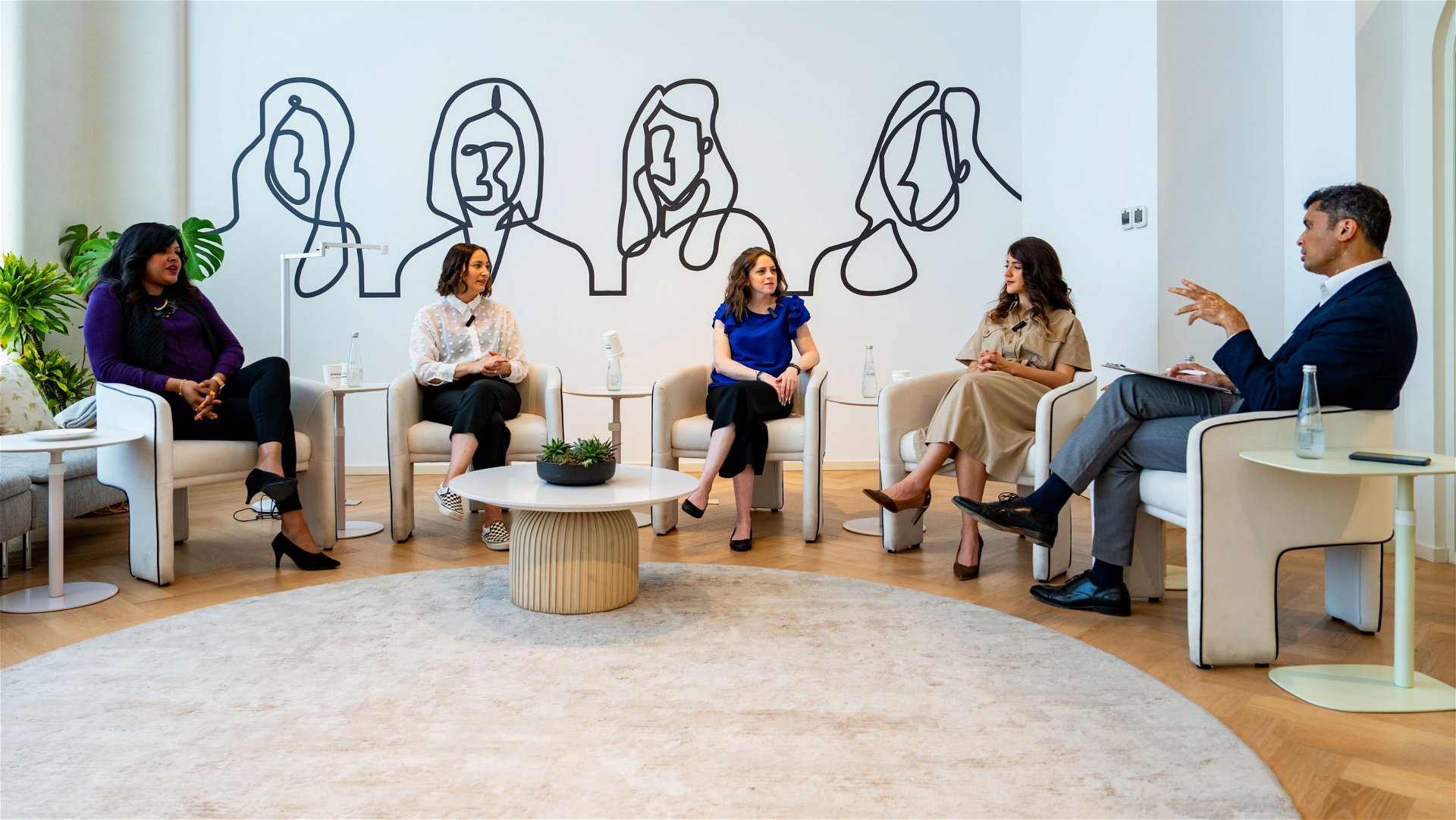
“Here in Dubai, one cannot even open the windows for better circulation”, Jennifer mentions. “If toxins are used in the building materials, there is not even the opportunity for them to find their way outside the space.“
– Jennifer Gabriel, Senior Project Designer at AAID
To incorporate such measures and win clients over, Rasha proposes talking to clients in their parlance. “Talent, Attraction, Retention – these are three terms every client with an office needs to hear. Convince them using that angle. They want to know more about ROI (Return on Investment), so explain it to them with that perspective”, she offers.
The end of the discussion saw participants moving their conversation to the inclusion of AI in the design process. A question about whether or not AI can help with productivity was floated to the participants. The final verdict was that AI could be useful if one knows how to use it ethically.
Throughout the session, there was one revelation that made highlights. ‘Productivity’ in the workplace could be enhanced through design strategies and troubleshooting. However, it should always begin with the passive factors. Ensuring space users have access to modest, primary living conditions must be a prerequisite. Designers and specifiers need to join hands with brands like Dyson, who remain at the forefront of technology to combat modern conundrums. Dialogues through the supply chain are necessary for driving change and concocting good, environment-friendly designs.
In-Studio with Dyson Airwrap
Article info
Article:
Date added:
19 December, 2023

